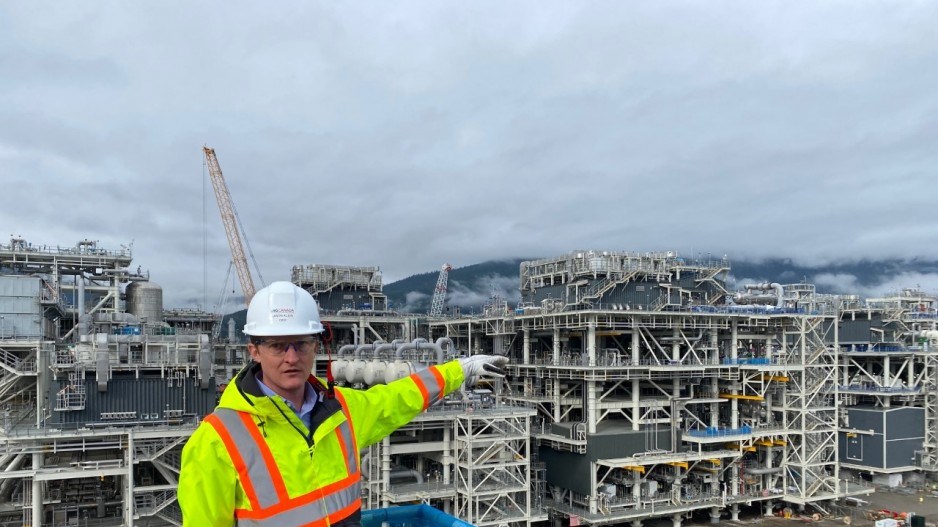As LNG Canada puts the finishing touches on its new $18-billion liquefied natural gas export facility in Kitimat, B.C., the company’s outgoing CEO recapped the benefits the project has brought to the province at the BC Natural Resources Forum in Prince George on Wednesday.
Jason Klein, who is stepping down as LNG Canada’s CEO in April and plans to return to his native Houston, Texas, recapped the seven-year effort to build Canada’s first large LNG export terminal.
Since LNG’s five partners – Shell, Petronas, Mitsubishi, Korea Gas and PetroChina – took a final investment decision in 2018, the project and the associated Coastal GasLink (CGL) pipeline has employed 65,000 workers over roughly a six-year construction period.
During peak construction, the LNG Canada project in Kitimat employed up to 8,000 workers, according to Resource Works, and CGL employed 6,000.
“We've had over 40,000 Canadians work on our site since we started construction,” Klein said in a fireside chat. “That's in addition to the more than 25,000 people who worked on the Coastal GasLink project that supplies gas to our site. So 65,000 Canadians have worked on this project.”
Over the construction period, LNG Canada spent $5 billion in B.C. on procurement and services, Klein said, with $4 billion spent with local and Indigenous-owned businesses, and will provide an "uplift" for B.C. natural gas producers.
Over the last year, the company has been recruiting and training the operations staff who will operate the facility once it begins exporting liquefied natural gas sometime this summer.
“We've partnered with people like BCIT and Coast Mountain College to train up a whole new industry of people,” Klein said. “And we spent, so far, $5 million on workforce development.”
The Haisla First Nation have been big supporters and beneficiaries of the project. One of the new businesses created through LNG Canada was HaiSea Marine – a company that will operate the tugboats used to shepherd LNG carries up and down Douglas Channel.
HaiSea Marine is a joint venture between the Haisla Nation and Seaspan ULC, which will operate a fleet of battery-electric powered tugboats, designed by Vancouver-based naval architects and marine engineers Robert Allan Ltd.
HaiSea’s contract with LNG was valued at $500 million and will employ 70 mariners and six onshore staff.
The Haisla have also benefited from the LNG Canada project by using it as a springboard for their own $5-billion LNG project – Cedar LNG. The Haisla have an offtake agreement in which it will use some of the natural gas from CGL to supply their own LNG project, which is now in early stages of construction.
The LNG Canada project helped blaze the path for other B.C. LNG projects, which include Cedar LNG, Woodfibre LNG and the Ksi Lisims project north of Prince Rupert.
Asked by host Bryan Cox, external affairs manager for Petronas Canada, if there is a market for more LNG from Canada, Klein said there is.
He said Russia’s invasion of Ukraine has fundamentally changed global natural gas and LNG markets.
“The Russian invasion of Ukraine did change global gas markets, and importing countries all are more acutely aware of the need for diverse and secure and reliable energy sources,” Klein said.
“But today, countries like Japan are still importing Russian LNG because they need to keep the lights on. We have the opportunity to displace that.”




